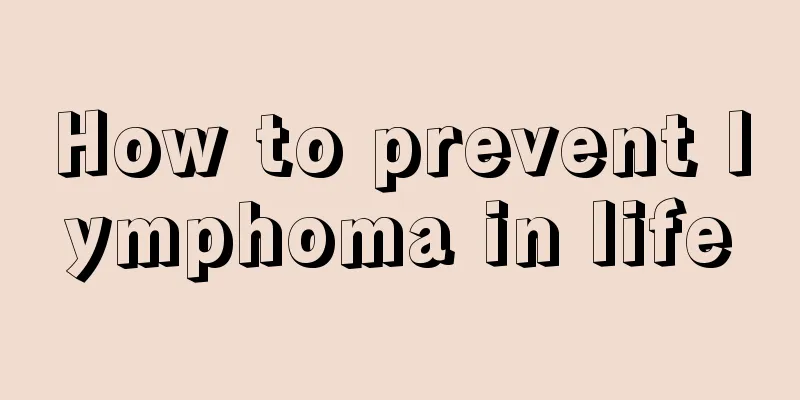Principles of chemotherapy for pulmonary tuberculosis

|
When treating many diseases, we want to use a treatment principle, and this principle is generally followed. It can cure the disease without any side effects and other complications. Only in this way can we achieve the goal of truly benefiting the patient. When treating a disease like tuberculosis, it is necessary to follow a treatment principle. So what are the chemotherapy principles for tuberculosis? When treating many diseases, we want to use a treatment principle, and this principle is generally followed. It can cure the disease without any side effects and other complications. Only in this way can we achieve the goal of truly benefiting the patient. When treating a disease like tuberculosis, it is necessary to follow a treatment principle. So what are the chemotherapy principles for tuberculosis? 1. Principles and plans for the use of anti-tuberculosis drugs Correct selection of medication, formulation of reasonable chemotherapy plans, adherence to chemotherapy principles and scientific management are the most effective measures to cure patients, eliminate infection and control the prevalence of tuberculosis. The chemotherapy regimen should be formulated or selected based on the patient's previous treatment (including initial or retreatment, anti-tuberculosis drug compatibility and application), bacterial excretion, drug resistance, lesion extent, and the presence of concomitant diseases and complications. Any regimen includes two different treatment phases: ① Intensive treatment phase: 3 to 4 drugs are used in combination for 8 to 12 weeks in order to kill various bacteria as quickly as possible to ensure successful treatment. ② Consolidation treatment stage: 2 to 3 or 4 drugs are used in combination. Its purpose is to consolidate the therapeutic effect achieved in the intensive stage and continue to kill residual bacteria. There are three types of medication: ① Daily medication throughout the course; ② Daily medication during the intensive period and intermittent medication during the consolidation period; ③ Intermittent medication throughout the course. 1. Chemotherapy regimen for newly treated sputum-positive pulmonary tuberculosis A short-term chemotherapy regimen was selected as follows: ①2HRZS(E)/4HR; ②2HRZS(E)/4HRE; ③2HRZS(E)/4H3R3; ④2H3R3Z3S3(E3)/4H3R3; ⑤2HRZ/4HR. 2. Chemotherapy regimen for retreatment of sputum-positive pulmonary tuberculosis ①2HRZES/6HRE; ②2HRZES/6H3R3E3; ③3H3R3Z3S3/5H3R3E3; ④3HRZEO/5H3L1O3. 3. Chemotherapy regimen for newly treated sputum-negative pulmonary tuberculosis ①2HRZ/4HR;②2HRZ/4H3R3;③2H3R3Z3/4H3R3. 4. Chemotherapy regimens for drug-resistant and multidrug-resistant tuberculosis (1) For those resistant to isoniazid: ①2REZ/7RE; ②2RES/10RE. (2) For those resistant to isoniazid (H) and streptomycin (S): 2HRZES/1HRZE/6RE. (3) Those resistant to isoniazid (H), ethambutol (E) or streptomycin (S): 3RTH (O) ZS (KM/CPM)/6RTH (O). (4) Those resistant to isoniazid (H) and rifampicin (R): 3THOEZAK (SM/KM/CPM)/18THOE (P). (5) Those who are resistant to isoniazid (H), rifampicin (R), ethambutol (E), and streptomycin (S) or those who are not resistant to streptomycin (S): 3THOCS (P) ZS (KM/AK/CPM)/18THOCS (P). (6) Before the results of the drug sensitivity test are obtained, the following regimens can be used as reference: ①3THZOS (KM/AK/CPM)/18THO; ②3THOEZSM (AK/KM/CPM)/18THOE (P). 2. Extending the indications of anti-tuberculosis chemotherapy The course of anti-tuberculosis chemotherapy should be appropriately extended (total course of treatment should be no less than 1 year) for patients with tuberculous meningitis or extrapulmonary tuberculosis of important organs, diabetes, pneumoconiosis, immune dysfunction (including HIV infection and AIDS patients), organ transplantation and bone marrow transplantation. 3. Indications for multidrug-resistant tuberculosis regimens Patients with any of the following clinical conditions, who have not obtained drug sensitivity results or are not yet in a position to undergo drug sensitivity testing, should be considered suspected multidrug-resistant tuberculosis (MDR-TB) patients and treated according to the MDR-TB regimen. 1. Patients with sputum positive bacteria who have failed initial chemotherapy and still excrete bacteria after standardized retreatment regimen. 2. Those who have recently received more than 2 courses of chemotherapy and are still excreting bacteria. 3. Patients who have been excreting bacteria for more than 2 years despite irregular anti-tuberculosis treatment. |
<<: Tuberculosis Isolation Measures
>>: How to diagnose tuberculosis
Recommend
Is it normal for adolescent boys to have nocturnal emissions?
Now some parents and teenagers are still unable t...
Can ice reduce swelling and relieve pain?
If you like sports, applying ice can have a good ...
Is hemorrhagic fever contagious?
When it comes to the disease of hemorrhagic fever...
What is the effect of fumigating a room with vinegar
Vinegar is a common condiment and many families u...
Habitual dislocation
There are always bumps and bruises in life, and d...
Detailed explanation of the common causes of kidney tumors
The main reason for the high incidence of kidney ...
Head hurts, eyes heavy
People may occasionally feel that their heads are...
How long does it take to recover from laser burns
Laser is a technology used in many fields of medi...
Soaking your feet like this is better than taking tonic medicine
Foot soaking is a very good way to maintain healt...
How to prevent complications after colorectal cancer surgery
There are some typical symptoms for patients with...
How to store chestnuts
China has a vast territory, so the chestnuts grow...
How to judge whether the scalp is dry or oily
Nowadays, when people go to buy skin care product...
How to clean ears with hydrogen peroxide solution
Hydrogen peroxide is what we commonly call hydrog...
How to care for skin shedding in the later stage of burns
When the human skin surface comes into contact wi...
What foods are best for detoxification and beauty?
Nowadays, many people pay special attention to de...









